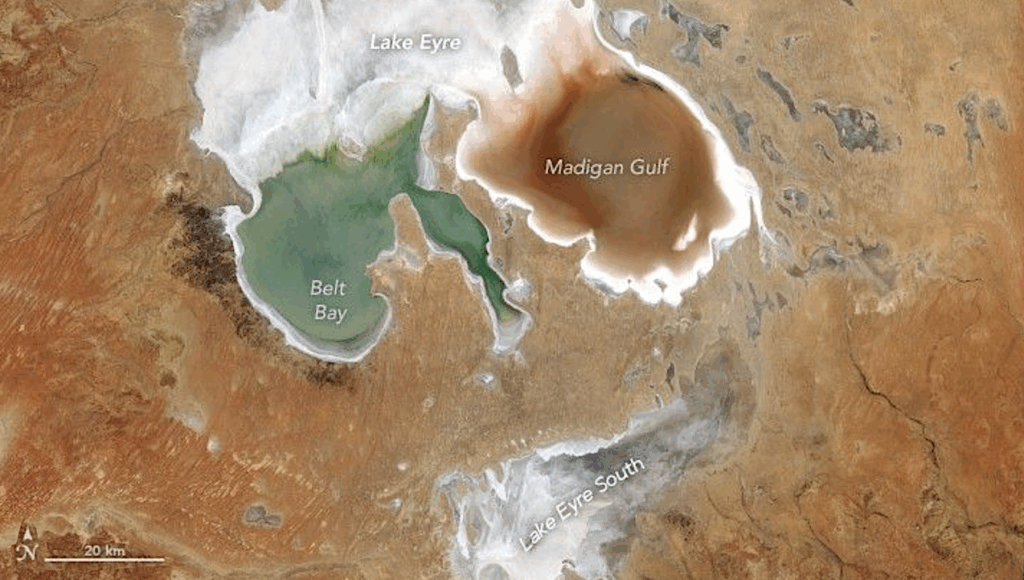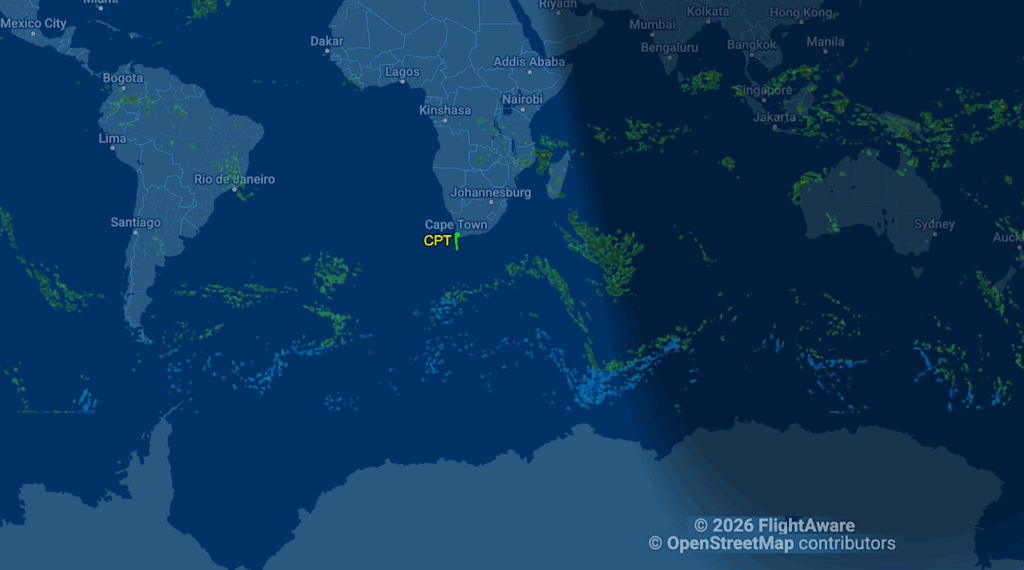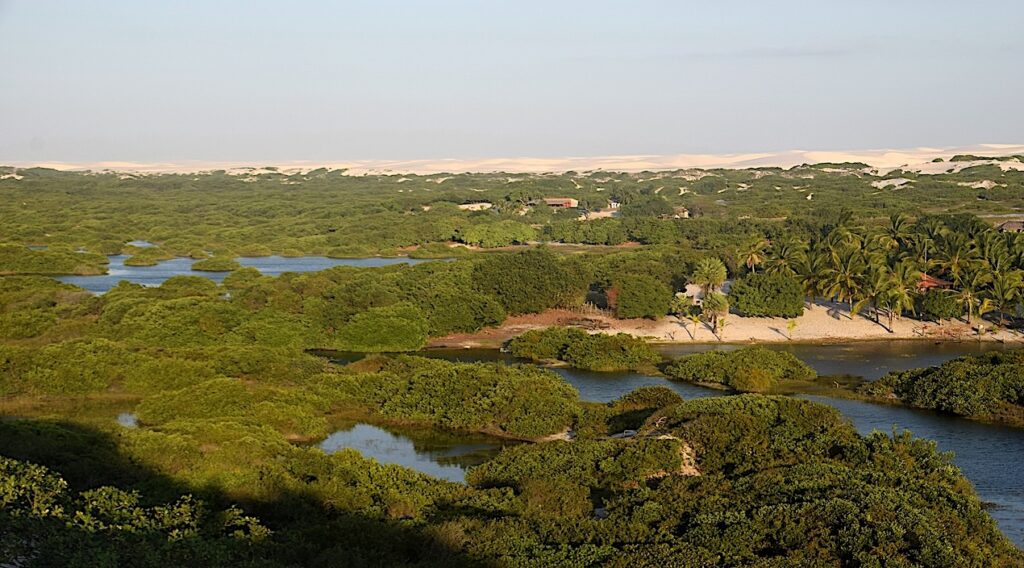Exploring the Composition of Europa with the Upcoming Europa Clipper Mission

Jupiter’s icy moon, Europa, harbors a subsurface liquid water ocean; the prospect of this ocean being habitable motivates further exploration of the moon with the upcoming NASA Europa Clipper mission. Key among the mission goals is a comprehensive assessment of the moon’s composition, which is essential for assessing Europa’s habitability.
Through powerful remote sensing and in situ investigations, the Europa Clipper mission will explore the composition of Europa’s surface and subsurface, its tenuous atmosphere, and the local space environment surrounding the moon. Clues on the interior composition of Europa will be gathered through these assessments, especially in regions that may expose subsurface materials, including compelling geologic landforms or locations indicative of recent or current activity such as potential plumes.
The planned reconnaissance of the icy world will constrain models that simulate the ongoing external and internal processes that act to alter its composition.
This paper presents the composition-themed goals for the Europa Clipper mission, the synergistic, composition-focused investigations that will be conducted, and how the anticipated scientific return will advance our understanding of the origin, evolution, and current state of Europa.

Artistic concept showing a variety of known and hypothesized processes that affect the composition of Europa’s tenuous atmosphere, its surface, and its upper interior in the last years. Processes within Europa’s ocean and ice shell may bring oceanic material to the surface, and some surface material may be delivered beneath the surface through geologic events. The surface composition is altered through exposure to radiation by Jupiter’s magnetic field and from incoming material from space, particularly material spewed from Io’s volcanoes. Volatiles and ice/dust grains are sputtered from the surface into the thin atmosphere by irradiation and micrometeoroid bombardment. Some of that material returns to the surface, while some of the molecules and atoms escape and may form a neutral cloud or even torus around Jupiter. The compositional investigations conducted by the Europa Clipper mission will identify and characterize the distribution of materials on the moon, constraining past and ongoing processes and exchanges of materials, and ultimately provide key information about the habitability of Europa — NASA
Introduction
NASA’s Europa Clipper mission will conduct a detailed reconnaissance of Jupiter’s icy moon Europa with the primary goal of assessing its habitability (Pappalardo et al. 2024; Vance et al. 2023, both this collection). Through a series of close flybys, the flight system will acquire remote sensing and in situ data to investigate the (1) composition, (2) geological features, and (3) interior of the moon, and (4) to search for current and recent activity.
The mission’s Composition Working Group is charged with providing a high-level, cross-instrument and cross-discipline, composition-driven science perspective to meet the Europa Clipper mission objective to assess the habitability of Europa’s ocean through its composition and chemistry.
This paper presents the planned compositional studies of Europa’s local space environment, atmosphere, surface, and subsurface that will be used to elucidate ongoing processing of the moon and complete the full examination of whether the conditions on Europa are, or have ever been, suitable for life.
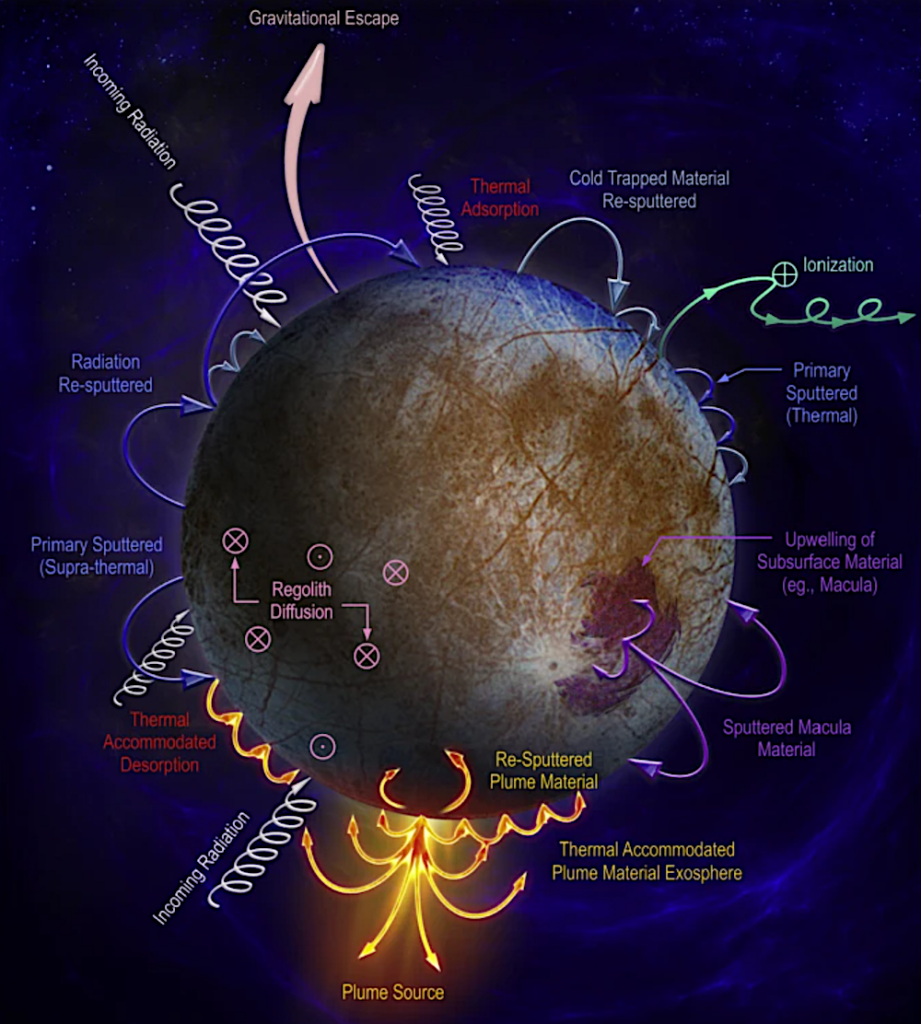
A simulation of SUDA surface impact ejecta detections during a flyby over Thera Macula (feature outlined in red) demonstrating how SUDA will provide surface composition with spatial resolution over geologic features. Panel A shows the locations of origin on the surface of the grains detected by SUDA. Panel B shows the modeled detection sequence of two types of ejecta. The detections marked in dark and light blue colors originate from inside and outside Thera Macula, respectively. The closest approach altitude of 35 km in this model is close to the center of Thera Macula, making it an ideal trajectory to obtain its surface composition. Panel C shows the modeled detection rate of both types of composition. The vertical red dotted lines indicate when Europa Clipper is over Thera Macula. In this case, detections from Thera Macula dominate the detection rate by SUDA when over the feature. This figure demonstrates how the SUDA investigation will map Europa’s surface composition through impact ejecta cloud measurements.– Springer
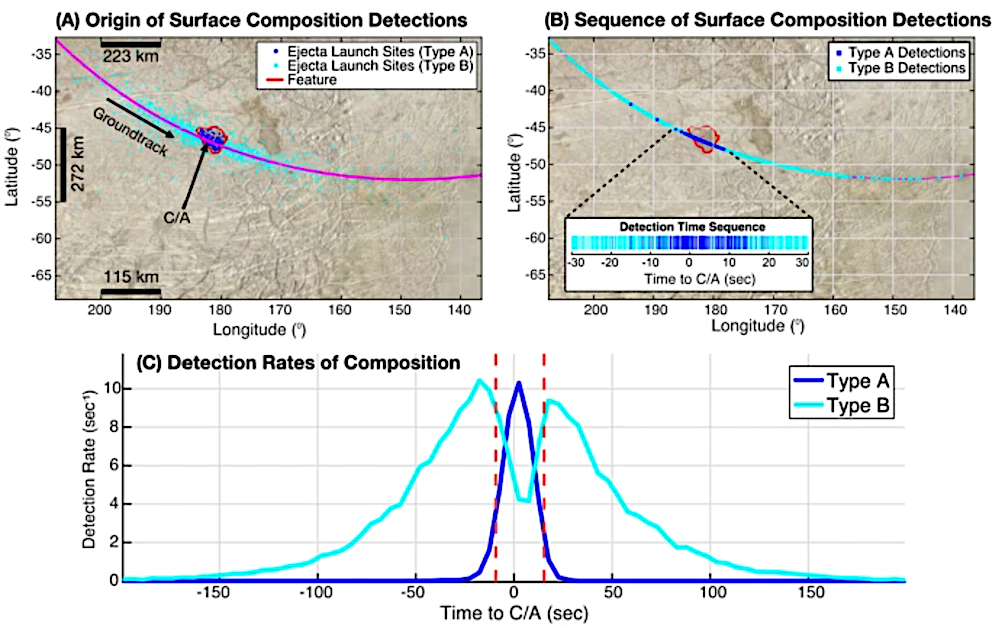
Multiple physical processes that could affect Europa’s tenuous atmosphere. The Europa Clipper investigations will be able to detect sputtered material and potentially plume material in the atmosphere to assess surface and possibly sub-surface compositions. Figure from Teolis et al. (2017).– Springer
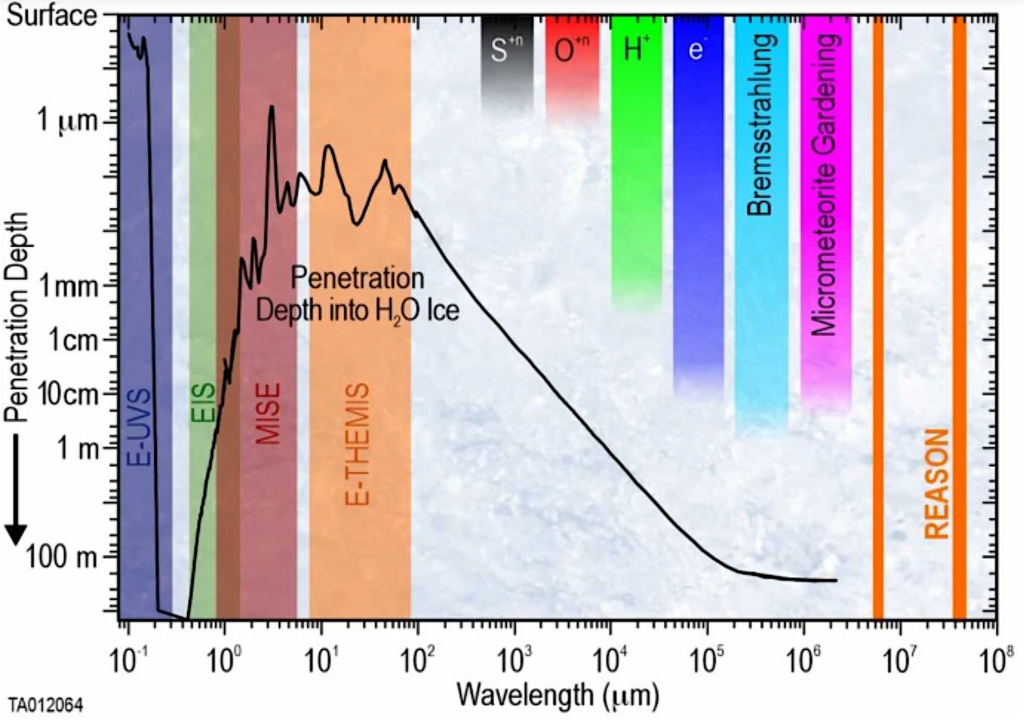
The maximum penetration depth into bulk H2O ice of remote sensing observations as a function of wavelength. This curve was created based on the imaginary optical constants from Warren and Brandt (2008) at 1/e attenuation, assuming the ice is a perfect glass, not granular, with no internal scattering or surface roughness. The bandpasses of the Europa Clipper investigations are indicated by the transparent vertical bars and labeled. The vertical bars that begin at the top of the figure indicate the depths at which different surface processes can affect the surface material and composition. The radiation processing depths are approximated to the maximum stopping ranges of S+, O+, H+ (NIST PSTAR online program), e− (NIST ESTAR online program), and Bremsstrahlung (NIST X-ray attenuation factors). Micrometeoroid gardening data are from Costello et al. (2021).– Springer
Exploring the Composition of Europa with the Upcoming Europa Clipper Mission, Springer (open access)
Astrobiology





